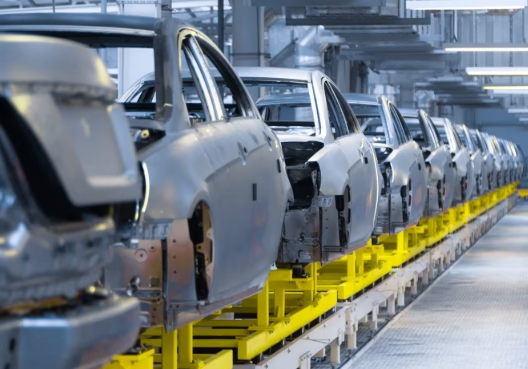What parts does a new energy vehicle consist of?
A new energy vehicle can be simply divided into three core parts: the power system, the motor, battery, and electronic control are like the “heart” of the car, which is the key to providing power; the body, chassis, suspension, and tires constitute the “skeleton and legs”, responsible for carrying weight and ensuring driving stability; the smart cockpit and electronic system, seats, screens, and sensors are like “nerves and skin”, which directly affect the driving experience and intelligence level.
The birth journey of a new energy vehicle
How can tens of thousands of parts be quickly gathered to become a complete vehicle? The answer lies in a “super industrial chain” that operates efficiently and races against time. In the Yangtze River Delta, through the coordinated development of industrial clusters, a new energy vehicle factory can solve the supply of required supporting parts within 4 hours, forming a new energy vehicle “4-hour industrial circle”.
Changzhou 1-hour logistics circle
In a modern vehicle factory in Changzhou, Jiangsu, 30% of the core parts of a new energy vehicle come from Changzhou.
Changzhou has gathered more than 500 auto parts companies, with more than 80 core power battery supporting companies, and the completeness of the industrial chain is as high as 97%. Within a 20-kilometer radius of the vehicle plant, seats, lights, tires, interior parts and other supporting products can also be delivered on call and can be transported to the warehouse for installation within 1 hour. The logistics on the “chain” races against time.
Jiangsu 2-hour logistics circle
The vision extends to the whole of Jiangsu, and the pulse of the “chain” is stronger, with 50% of the supporting resources within reach.
From Wuxi’s automotive-grade chips to Suzhou’s high-strength steel, a distance of 120 to 180 kilometers, all categories can be delivered within 2 hours and accurately reach the production line.
Yangtze River Delta 4-hour logistics circle
Looking at the entire Yangtze River Delta, this “artery” of the new energy vehicle industry chain shows great power. 80% of the supporting resources for a new energy vehicle can be efficiently gathered here.
From Ningde’s battery raw materials to Shanghai’s smart screens, they can be deployed across cities within 4 hours. The high-speed flow of information and logistics on the “chain” breaks the barriers of time and space.
From the landing of each “heart”, the closing of each “skeleton”, to the connection of each “nerve” – the three closely interlocking industrial circles of Changzhou, Jiangsu and the Yangtze River Delta are like a huge precision clock, operating efficiently in the concerto of “busy on the chain”. It is this interlocking and time-sensitive collaboration that allows tens of thousands of parts to be quickly gathered in just 4 hours, completing a gorgeous transformation, and a brand-new smart new energy vehicle is born.
















Leave a Reply